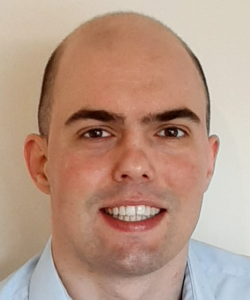
For our first researcher profile, we spoke to Philippe Martinuzzi, R&D Modelling and Simulation Manager at EDF Energy R&D UK Centre / Nuclear.
In this Q&A, Philippe tells us about his role and his involvement with the SINDRI programme, plus his hopes for the project and the impact it will have.
-
Can you tell us about your career experiences to date?
My background is in structural integrity and finite element modelling. I have spent all my career at the EDF Energy R&D UK Centre, within the Modelling and Simulation Centre embedded at the University of Manchester. I joined the company as a research engineer, developing advanced models and adapting the EDF modelling and simulation software in support of the extension of the AGR lifetime.
Since 2018, I have managed the EDF UK Centre Modelling and Simulation team, continuing to support the plant life extension programme while preparing the team to address the future challenges associated to PWR technology (Sizewell B and EPRs) and nuclear new build.
-
What is your role on the SINDRI project?
I am work package lead of WP3a, focused on the integration of the research within the EDF Modelling and Simulation environment (salome_meca platform and code_aster solver). Over the past 30 years, EDF has invested on the development of their own open-source modelling and simulation platform, enabling to have full control over the evolution of the code and the quality assessment process. This is a critical aspect when working in the nuclear sector.
My main focus will be to create awareness on the strong capabilities offered by this environment to the entire consortium, and upskill the university staff involved in this project. Communication on the ongoing activities with the EDF R&D projects and programmes is a key part of the role as well, so that activities are visible and integration is facilitated.
-
What is your ambition for the project; what do you want it to achieve?
I will consider this project a success when we can demonstrate that academics of the University of Bristol, the University of Manchester and imperial College London are comfortable doing their research exploiting EDF tools, and equally important, that their research and novel methods influence the evolution of the platform, with novel methods integrated, particularly in the data-based modelling area.
This two-way interaction will be creating the right eco-system for a flourishing collaboration: a pipeline towards digital twinning.
-
How does/will the SINDRI project link with other activities you are/have been involved in?
SINDRI will help EDF Energy, its supply chain and strategic partners transition their skills and methods of collaboration to be ready for next generation of nuclear. Beyond EDF, this project has a strong role to play in the BEIS Nuclear Innovation Programme, in particular the Nuclear Virtual Engineering Capabilities (NVEC) work package, in which my team has been strongly involved over the past five years in Phases 1 and 2.
I would like to see compatibility of the tools developed in this project with the NVEC platform being implemented during the next phase. This will be a key aspect for its adoption nd deployment throughout the supply chain and other nuclear stakeholders, who have all supported this SINDRI initiative and are involved in the NVEC programme.